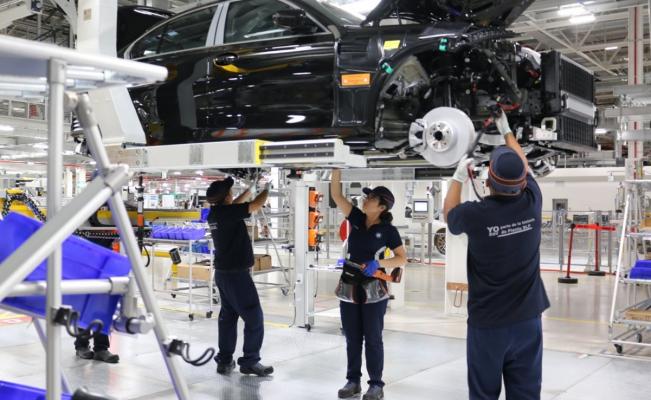car manufacturer BMW Group San Luis Potosí مصنع Plant It continues on the path of establishing itself as the most sustainable company in the German company.
globally, BMW The group has set a goal of reducing CO2 emissions by 80%, and adopting a strategic approach for all its regions, in the case of the plant located in San Luis Potosi, it has proposed to be the first carbon dioxide neutral plant, to achieve this, it has developed a sustainability strategy that focuses It has four pillars with the aim of developing high impact measures on environmental issues and managing resources efficiently.
1. Energy efficiency. The coating area has developed a system that takes advantage of residual heat, recovering hot air from the furnaces and using it for other processes, reducing the consumption of 200 cubic meters of natural gas per month.
Mine: BMW will manufacture the 2 Series Coupe at its plant in San Luis Potosi
In order to reduce energy consumption, all lighting in the factory uses LED lights and production lines use “Smart Factory Vision” screens. Similarly, forklifts in logistics use more efficient lithium-ion batteries, due to their longer useful life and very short recharge times compared to conventional lead-acid batteries.
2. Clean energy sources. The plant is supplied with 100% carbon dioxide-free electric power.
It currently has 71,000 square meters of solar panels that provide 13 percent of the required energy, while the remaining 87 percent is provided by an outdoor solar park with a “Declaration of Conformity to Ensure Energy Origin” certification. In addition, the company is working to expand the installation of solar panels inside the plant to 210,000 square meters, which will allow an additional 26% of the required clean energy to be generated.
In addition, the San Luis Potosi plant is looking at alternatives to reduce energy consumption and carbon dioxide emissions by replacing natural gas with biogas in certain processes.
3. Water efficiency. Recognizing the importance of water, the station uses water resources carefully. Primarily, the painting area uses a special dry paint separation system that allows the proper disposal of waste from this process without the use of water, thus minimizing the impact on the environment. This made the Potosina plant the first in the entire network to completely eliminate the use of water to recover paint residue.
The remaining water used in the coating process is regenerated and reused through biological treatment.
It should be noted that all wastewater used in other services is treated, meeting all quality standards, and reused for cleaning and irrigation facilities.
4. Zero waste in landfill, efficient handling and recycling. The station has adopted a zero waste landfill policy through which it has been proven that 100 per cent of the generated waste is separated and classified to facilitate recycling and thus prevent its destination from negatively affecting the environment. This procedure allowed the annual reuse of up to 2,000 tons of cardboard, 1,000 tons of wood, 19.9 tons of plastic (PET), and 10.7 tons of aluminium.
Likewise, paperless assembly and storage processes have been adopted. To achieve this, the assembly process uses radio frequency tags and infrared technology that allows employees to view vehicle configuration and equipment data through screens on their workstations. This scale saves 60kg of paper per day.

“Unapologetic pop culture trailblazer. Freelance troublemaker. Food guru. Alcohol fanatic. Gamer. Explorer. Thinker.”




